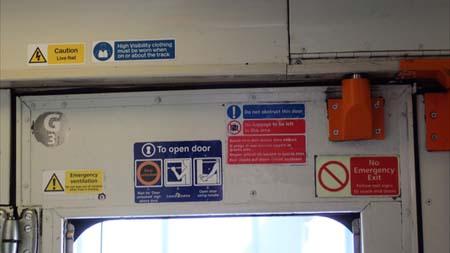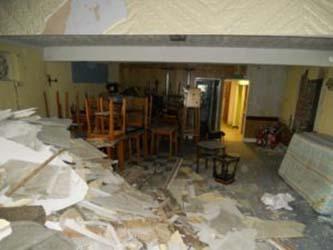Home Working
Guidance for both the employer and employee
Approximately 4.3 Million employees consider home as their work base and 34% of employees work at home as part of their work. Also, just over half of homeworkers in 2018 were women (54%).
So, this week I thought that I would look at the topic of Home Working and try and give guidance for both the Employees who works some of their time from home and for the Employers who have a duty to protect the health and safety of all employees, including homeworkers.
More and more people are working from home, this can because the nature of their job or because they have to balance work with domestic duties such as looking after children or sick/elderly family members.
Some people work at home because now all they need is a laptop or tablet and they can be connected to their office from wherever they are. For many employees and employers this offers greater flexibility and freedoms and, as long as the work gets done properly and on time, this home working is welcomed by all.
But both sides have legal duties and responsibilities and this week’s newsletter hopes to clarify these.
So what are the employee responsibilities?
If you work from home, your employer must make sure there is a risk assessment of your work activities. This may involve someone visiting you or it may involve you completing a questionnaire and providing appropriate evidence e.g. photographs. It will help decide if sufficient steps have been taken to prevent harm to you or anyone else who may be affected by your work.
If you use electrical equipment provided by your employer as part of your work, your employer is responsible for its maintenance. They are not responsible for electrical sockets and other parts of your domestic electrical system, these are your responsibility. It is also recommended that you carry out the following basic checks on a regular basis:
- electrical equipment is turned off before it is checked
- plugs are not damaged
- the outer cover of the equipment is not damaged, for example look for loose parts or screws
- leads, wires or cables do not have damage to the outer covering
- there are no burn marks or staining that suggests overheating
- there are no trailing wires.
If electrical equipment is damaged, faulty or dangerous, you should notify your employer so that repairs or replacements can be made.
If your employer provides any control measures you must use them properly. For example, you may be provided with a stand for your laptop computer, personal protective equipment, or even a procedure to be followed. You have a legal duty to use these controls as you have been instructed.
If you habitually used display screen equipment (DSE) as part of your work, you will be entitled to an eye test and you should also have a workstation assessment which may be undertaken by questionnaire. Your employer must provide you with information on how to obtain this.
If you have any concerns about the safety of your home working arrangements, you should speak to your employer or manager.
Home workers should notify their employer of any accidents or incidents that occur whilst they are working. In some case, the employer will provide the employee with a first aid kit, dependent on the work activities.
Training and guidance
You should receive training, a briefing, or some form of guidance on the arrangements. You must ask your employer for such training and see what written risk assessments and/or guidance sheets they have.
The Wilkins Safety Group Ltd can supply you and your employer with guidance notes and training.
“If your employer provides any control measures you must use them properly”
Insurance
Working from home may affect your domestic insurance cover. Home workers are responsible for making enquiries with their own insurance providers!
What are the Employer’s duties?
Employers have a duty to protect the health and safety of all employees, including homeworkers. These duties include assessing the risks and ensuring your employees are suitably informed and trained.
Assessing the risks
- a risk assessment must be carried out which identifies the hazards relating to the homeworkers’ work activities and show the steps that have been taken to prevent harm to them or to anyone else who may be affected by their work
- it may be necessary for the employer to visit their homeworkers to carry out a risk assessment particularly for higher risk work, however a system of self-assessment that is supported by photographs and detailed descriptions, may be adequate to ensure adequate contrails are in place, risk assessments must be reviewed periodically
- when deciding who may be affected by the work done at home and how they may be affected, this should include the homeworker and members of the household, including visitors
- appropriate steps need to be taken to eliminate or reduce any identified risks and if the employer has five or more employees the assessment must be written down – however it is good practice to always do this
- the risk assessment must consider homeworkers who are new and expectant mothers. Risks include those to the unborn child or to the child of a woman who is still breast feeding, not just risks to the mother herself.
The most common heath problems experienced by homeworkers are headaches, back/neck ache and eyestrain.
Legislation and guidance
The main areas of health and safety law relevant to home working are:
- The Health and Safety at Work etc. Act 1974
- The Management of Health and Safety at Work Regulations 1999 (as amended)
- The Health and Safety (Display Screen Equipment) Regulations 1992 (as amended)
- The Manual Handling Operation Regulations 1992 (as amended)
- The Provision and Use of Work Equipment Regulations 1998 (as amended)
- Control of Substances Hazardous to Health Regulations 2002 (as amended) (COSHH)
- The Regulatory Reform (Fire Safety) Order 2005
- Fire (Scotland) Act 2005.
Some common hazards associated with homeworking are:
- manual handling – loads that are heavy, bulky, difficult to grasp or unstable; awkward lifting, reaching or handling; pushing or pulling; repetitive handling with insufficient rest breaks; twisting and stooping
- use of work equipment at home – incorrect equipment for the job, insufficient provision of training or information, lack of maintenance, insufficient controls/guards, failure to provide suitable and sufficient personal protective equipment
- using electrical equipment at home
- using substances and materials
- fire safety, particularly if the working area is above the ground floor
- working with DSE
- lone working.
If homeworkers use electrical equipment provided by the employer as part of their work, the employer is responsible for its maintenance. Employers are only responsible for the equipment they supply and not responsible for any electrical sockets and other parts of the homeworkers’ domestic electrical system.
The employer must give consideration to any first aid needs of the homeworker.
Help available from The Wilkins Safety Group Ltd
Here at the Wilkins Safety Group we can help clients with:
- Online training in areas such as DSE Equipment and DSE Workstation Assessment. – and of course Home Worker Course
- Model Policy on Home Working
- WSG Guide on Home Working
If you would like any further help or support, please please contact us by phone 01458 253682, email or via our Facebook page or by Twitter.
Taunton & Somerset CPD Group at The Exchange House Taunton
if you are not on the CPD Seminar mailing list but would like to be please drop Jon an email and he will deal with your request.
Please Note: These will commence again 11th September.
Save Money on Your Online Training
If you are a company that will need quite a few of your staff trained using these courses, you may want to take advantage of the fact that you can pre-buy the training credits at a bulk rate.
This will allow you to buy the credits at a discounted rate to be used at your convenience. There is no limit on the time it takes to use the credits and 1 credit = 1 training course.
For companies that know they will need over 5 in a year but not all at the same time this automatically starts reducing your costs.
To buy in bulk simply click on the bulk credits button and purchase the number you will require. Once you have paid for your courses you can utilise them at your leisure and fit them into your staff training requirements.
If you have any questions, please contact us and we will be happy to advise.
What is the cost of these courses?
Companies will be able to buy credits. Each of these credits will allow 1 allocated person access to 1 course. The cost of these credits will reduce based on the number of credits purchased. See pricing chart below:
| No of credits | 1-5 | 6-10 | 11-20 | 21-30 | 31-40 | 41-50 | 51-75 | 76-100 | 101-150 | 151-200 | 201-250 |
|---|---|---|---|---|---|---|---|---|---|---|---|
| Cost of credit | £19.99 | £17.99 | £16.99 | £15.99 | £14.99 | £13.99 | £12.99 | £11.99 | £10.99 | £9.99 | £7.99 |
So, for example, if you run an architectural practice where you have 15 Architects and 10 other office workers. You may require
- 25 x DSE Workstation assessments as they all use them
- 15 x Asbestos Awareness for the architects as required by law
- 4 x Fire Warden Training to be sure you have enough to cover holidays etc
- 15 x Lone working course as some architects will carry out surveys etc alone
- 15 x Working at height for those who are going up ladders etc on surveys
So that is 74 courses at only £12.99 each and if you also allow for Manual Handling, First Aid, PPE, Driving safety etc. you will soon have reduced the price to £10.99 per course.
Which is not a lot of money to pay to have your workforce fully updated and trained in Health and Safety. At the same time, you are ensuring your practice is complying with its legal duty to train staff
Remember – There is no limit on the time it takes to use the credits
Govia Thameslink pays £1m over passenger’s window death
Govia Thameslink Railway (GTR) has been fined £1m with £52,267 costs after a passenger was killed when he put his head out of a carriage window on an express train..
Simon Brown, 24, sustained fatal injuries when his head struck a signal gantry near Balham in South London on 7 August 2016. The Gatwick Express to London Victoria was travelling at about 61 mph.
GTR, which operates the service, pleaded guilty to breaching section 3(1) of the Health and Safety at Work Act and was sentenced last month at Southwark Crown Court.
The “droplight” window was in a corridor on a door opposite a guard’s compartment. This door was accessible to passengers but was not intended for their use. Unlike other windows on the train, this one was not restricted from opening fully.

The warning sticker was in a ‘cluttered environment’ | Image credit: RAIB
An investigation report (bit.ly/2LSINIx) by the Rail Accident Investigation Branch (RAIB) said there was a warning sticker on the door above the window stating: “Emergency ventilation. Do not lean out of window when train is moving.” However, this was “secondary” to the wording about emergency ventilation and was placed in a “cluttered environment of other warning and information signs”.
The report said:
“One of these signs, which is more prominent than the warning sticker, provides instructions on opening the door (including lowering the window to access the exterior door handle), despite the fact that this door is not intended for passenger use. Although there is a notice on the outside of the carriage that this door is ‘not for passenger use’, there is no such notice on the inside.”
The RAIB found no evidence to explain why Brown put his head out of the window. It concluded that there was nothing to prevent passengers opening the window or leaning out, and that the 260 mm distance between the train and gantry was “less than normal standard clearance”.
The report said:
“The process for assessing the compatibility of this train on this route did not identify the risk of the combination of reduced structure clearances and opening windows.”
After the incident GTR fitted bars across the windows in such a way that it was still possible to lower the window, and therefore open the door when necessary, but it was not possible for passengers to position their heads outside the carriage.
The UK’s rail regulator, the Office of Rail and Road (ORR), which brought the prosecution, told the court that the risks associated with droplight windows should have been identified by a suitable risk assessment, and control measures introduced. However, GTR failed to take the appropriate action, it said.
It also revealed that there had been a similar incident in 2002, which resulted in enforcement action against train operator South Central.
Ian Prosser, ORR director of safety and the chief inspector of railways, said:
“There are still some trains with droplight windows operating on the network and we have written to operators instructing them to take immediate action to prevent a similar tragedy happening again.”
Asbestos disturbed in restaurant
Asbestos disturbed in restaurant
A restaurant owner has been fined after asbestos was disturbed during the conversion of rooms above the restaurant into flats. 
During September 2016, above the Marco Polo restaurant on Lower Southend Road, Wickford, Essex, asbestos insulation board was removed and broken up which resulted in workers being exposed to asbestos fibres. An asbestos survey was only carried out after the asbestos had been disturbed.
The HSE’s investigation found that a management asbestos survey and a refurbishment and demolition asbestos survey had not been completed prior to the work starting, and the work had not been completed by a licenced asbestos contractor.
Faruk Kamali of Lower Southend Road, Wickford, Essex pleaded guilty to breaching Regulation 4(3) of the Control of Asbestos Regulations 2012 and was fined £3,000 and ordered to pay full costs of £6,293.
After the hearing HSE inspector David King said:
“Those in control of works have a responsibility to manage the risks from asbestos in non-domestic premises. To achieve this the dutyholder must ensure that a suitable and sufficient assessment is carried out as to whether asbestos is or is liable to be present in the premises.”
Remember
Unlike other organisations who send out newsletters giving you a little titbit of information, then stating that if you want to follow the full link or read the full story or get more information you must pay to subscribe to their service.
- Our newsletter service is FREE,
- The links we supply are FREE,
- The helpline advice is FREE.

If you find this newsletter service of use and you think others might also find it useful, then kindly pass it on and ask them to subscribe for free, so they can continue to receive it in their own right.
Also contact us if you have a particular health and safety subject or question you would like covered
If you have any queries on any health and safety matter, please contact Jon Wilkins on 01458 253682 or by email on [email protected]


